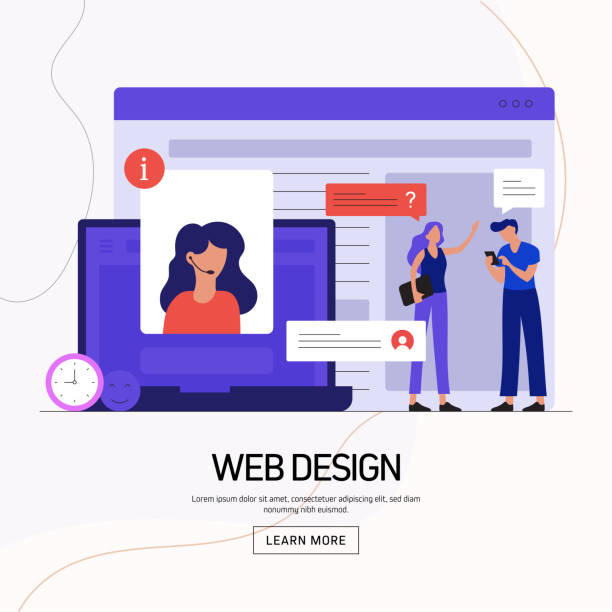The Fundamental Importance of Secure Website Design in the Digital Age

In today’s world, where #InformationTechnology and the #Internet have become the backbone of our daily lives, the concept of secure website design is no longer an option, but a vital necessity.
Every day we witness an increase in the complexity of cyberattacks and the tendency of attackers to steal information, disrupt services, or destroy data.
An insecure website not only puts businesses at risk of losing credibility and sensitive customer data but can also lead to significant financial losses and serious legal consequences.
Therefore, cybersecurity in the web development process, from the initial design stages to implementation and maintenance, must be prioritized.
In this educational section, we will explore why investing in secure website design from the outset is far more efficient and cost-effective than any attempt to patch problems after an attack has occurred.
This preventive approach not only protects information but also builds user trust, which is crucial for the success of any online business.
In fact, website security is not an added feature, but an integral part of a successful and sustainable website.
Are you losing business opportunities due to an outdated website? With Rasawwb, solve the problem of not attracting potential customers through your website forever!
✅ Attract more high-quality leads
✅ Increase brand credibility in the eyes of customers
⚡ Get free corporate website design consultation
Recognize Common Web Vulnerabilities
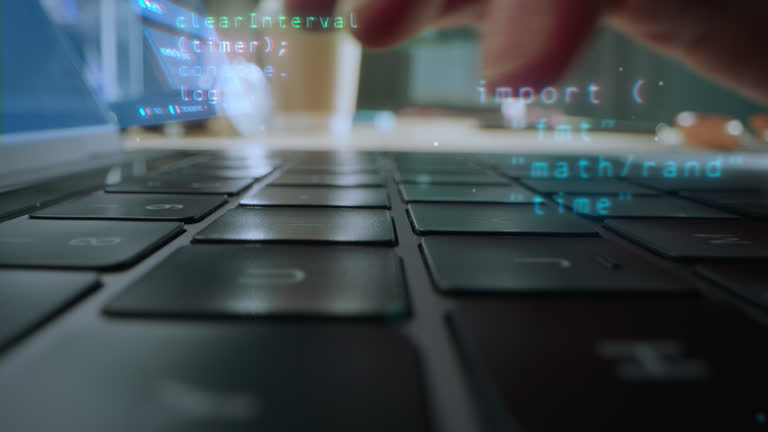
Understanding common weaknesses and vulnerabilities is the first step towards secure website design.
Attackers are constantly looking for security holes to infiltrate systems.
Among the most common of these vulnerabilities is SQL injection, where an attacker injects malicious SQL code into website inputs, gaining access to or modifying database data.
Cross-Site Scripting (XSS) attacks are also common, allowing attackers to execute malicious code in the victim’s browser and steal their information.
Cross-Site Request Forgery (CSRF) and failures in authentication and session management mechanisms are also critical weaknesses that need careful attention.
Even incorrect server configuration and the use of outdated components or those without security patches can open the door to intrusion.
This analytical section helps us to look at security challenges with a deeper understanding and consider appropriate solutions to combat them.
Any negligence in identifying and fixing these vulnerabilities can turn into a disaster for the business and its users.
For this reason, developers and website administrators must constantly update their knowledge in this area and use appropriate tools to identify these problems.
Secure Coding Principles and Best Practices
![]()
To achieve secure website design, adhering to secure coding principles is of paramount importance.
These principles include thorough checking and validation of all user inputs (Input Validation) to prevent the injection of malicious code and data, using Parameterized Queries when interacting with the database to combat SQL injection, and proper Session Management to prevent identity spoofing.
Additionally, encrypting sensitive information, using strong hashing functions for password storage, and applying the Principle of Least Privilege for users and services are other key solutions.
Distrusting input data from any source, even if it appears secure, is a fundamental principle.
This section provides practical guidance for developers who want to write robust and secure code from the outset and prevent the creation of security vulnerabilities.
Following these tips not only strengthens the website but also simplifies its maintenance and update process.
Below, a guide table for some of the best secure coding practices is provided, which can be used as a checklist for developers.
| Topic | Description | Example/Key Point |
|---|---|---|
| Input Validation | Thoroughly check and filter all user input data. | Using Regex, defining min/max length, checking data type. |
| Parameterized Queries | Separate data from SQL commands to prevent SQL injection. | Using PreparedStatement in Java or PDO in PHP. |
| Session Management | Use complex and secure session IDs, set expiration times. | Using HttpOnly and Secure cookies. |
| Sensitive Data Encryption | Encrypt sensitive data in transit and at rest. | Using HTTPS, disk encryption. |
Server and Hosting Infrastructure Security

In addition to secure coding, secure website design requires special attention to server and hosting infrastructure security.
Even if the website code is flawless, a vulnerable server can open the door for attackers.
The use of powerful firewalls, including Web Application Firewalls (WAF), is essential for filtering malicious incoming and outgoing traffic.
Server hardening, including removing unnecessary services, secure operating system configuration, and regular application of security patches for server software (such as web servers, databases, and operating systems) are also vital measures.
Choosing a reputable and secure web hosting provider that offers advanced security protocols, regular backups, and 24/7 monitoring is an important part of this specialized process.
Furthermore, separating development, testing, and production environments and implementing precise access controls to servers are other key points in maintaining infrastructure security.
This specialized section highlights the importance of integration and coordination between application security and infrastructure security, as a security chain is only as strong as its weakest link.
Neglecting any of these aspects can jeopardize the entire system and render efforts to create a secure website ineffective.
Losing potential customers due to an unprofessional website? Rasawwb is your answer! With our specialized corporate website design services:
✅ Enhance your business’s credibility and standing
✅ Experience attracting more targeted customers
⚡ Act now to receive a free website design consultation!
Data Encryption and Privacy Protection
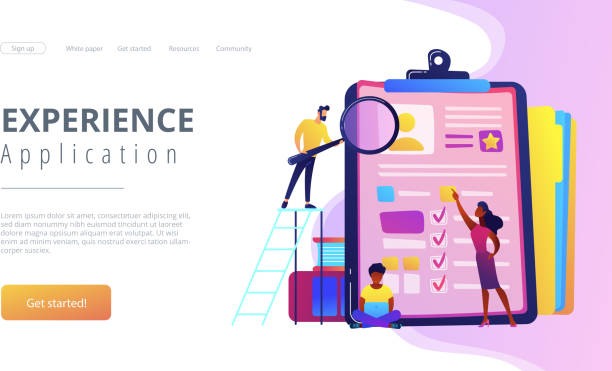
One of the main pillars of secure website design is data protection through encryption.
The use of the HTTPS protocol with SSL/TLS certificates has now become an indispensable standard.
This protocol encrypts the communication between the user’s browser and the website server, preventing eavesdropping, tampering, or forging of information during transmission.
In addition to data in transit, protecting Data at Rest is equally important.
This includes encrypting databases, files stored on the server, and even backups.
The discussion of data privacy and compliance with regulations such as GDPR (General Data Protection Regulation) adds another dimension to this topic for websites dealing with European users.
This section focuses on explaining the importance of encryption and how to implement it across various layers of a website.
The ultimate goal is to ensure that users’ sensitive information, from passwords to financial and personal data, is securely maintained and managed throughout its entire lifecycle, from input to storage and processing.
This is not only a security requirement but also significantly contributes to maintaining user trust in your website.
User Authentication and Access Management
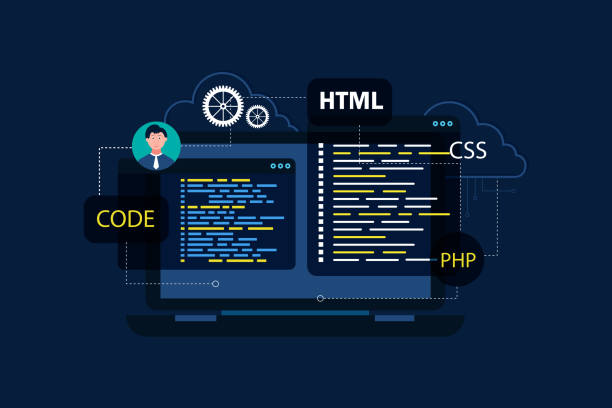
Implementing strong authentication and access management mechanisms plays a key role in secure website design.
Strong authentication means going beyond just using passwords; it includes requiring the use of complex passwords, implementing multi-factor authentication (MFA) such as using one-time codes or biometrics, and limiting the number of login attempts to prevent Brute Force attacks.
After authentication, the Authorization system is responsible for ensuring that each user only has access to the resources and functionalities they are permitted to access.
This is often implemented through Role-Based Access Control (RBAC) models, where permissions are granted based on the user’s role (e.g., administrator, editor, regular user).
This educational section explains the importance and implementation of these mechanisms.
Proper management of user sessions is also crucial to prevent the misuse of active sessions, including setting appropriate session expiration times and forcing users to log out after a certain period of inactivity.
These measures significantly reduce the risk of unauthorized access and help maintain data integrity and confidentiality.
Regular Security Audits and Penetration Testing
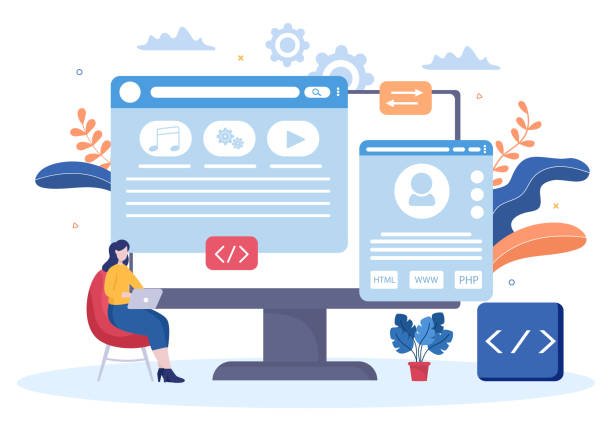
A website, even after initial secure website design, requires continuous monitoring and auditing.
The landscape of security threats is constantly changing and evolving, with new vulnerabilities being regularly discovered.
Therefore, conducting regular security audits, vulnerability scans, and Penetration Testing is essential.
Vulnerability scanning can be performed automatically to identify known weaknesses, while penetration testing is a more manual and comprehensive approach where security experts attempt to infiltrate the system like a real attacker to discover hidden vulnerabilities.
Bug Bounty Programs can also be beneficial, where security researchers receive rewards for finding and reporting vulnerabilities.
These analytical and guiding approaches help identify and fix weaknesses before they are discovered by real attackers.
This continuous process of security improvement ensures that the website is always protected against the latest threats.
Below is a sample table of auditing and penetration testing tools.
| Tool Type | Tool/Platform Name | Main Use |
|---|---|---|
| Web Vulnerability Scanner | Acunetix, Burp Suite, OWASP ZAP | Automatic identification of website vulnerabilities. |
| Penetration Testing Framework | Metasploit Framework | Comprehensive tools for exploitation and penetration testing. |
| Network Traffic Analyzer | Wireshark | Monitoring and analysis of data packets in the network. |
| Configuration Assessment Tools | Nessus, OpenVAS | Assessment of server and network device security. |
Security Incident Response and Recovery

Despite all secure website design measures, the likelihood of a security incident never reaches zero.
Therefore, having a comprehensive and pre-defined Incident Response Plan is vital.
This plan should include stages for incident identification, containment, root cause analysis and eradication, system recovery, and finally, lessons learned from the incident.
Speed and efficiency in these stages can make the difference between a minor disruption and a major disaster.
Additionally, implementing regular and automated Backup and Recovery solutions ensures that in case of data loss or destruction, it is possible to return to normal operation.
These backups must be stored in secure locations separate from the main server.
This news and guidance section emphasizes the importance of preparedness and having a clear strategy for dealing with security crises.
Transparent communication with users in the event of a security breach (if necessary) and cooperation with legal authorities are also part of the security team’s responsibilities.
Preparing for the worst-case scenario is the best way to ensure the website’s stability and resilience against attacks.
Falling behind in competition with large online stores?
Rasawwb makes your business online with professional e-commerce website design and increases your market share!
✅ Increase brand credibility and customer trust
✅ Easy shopping experience leading to more sales
⚡ Act now to receive a free website design consultation!
The Human Factor in Web Security
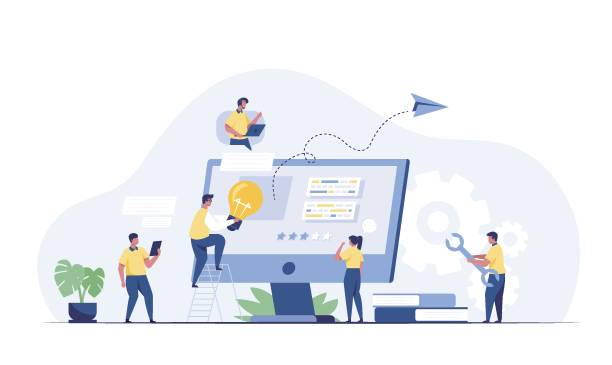
In addition to the technical aspects of secure website design, the human factor is one of the biggest yet most complex challenges in web security.
Many successful attacks occur not through technical weaknesses, but by exploiting human vulnerabilities such as lack of awareness or unintentional errors.
Social Engineering and Phishing attacks are prime examples of such attacks, where attackers deceive individuals to obtain sensitive information like passwords or banking details.
Continuous education and awareness-raising for users, employees, and developers about best security practices, how to identify suspicious emails, and the importance of using strong passwords and two-factor authentication, are of high importance.
This thought-provoking and engaging section reminds us that security is not just a technical process, but a culture that must be embedded at all levels of the organization.
Creating a strong security culture, where every individual understands their responsibility for maintaining security, is as effective as any technical solution in strengthening a secure website.
Even a website with the best security measures will be vulnerable if its users are not aware of the threats.
Future Trends and Continuous Improvement in Web Security

The field of web security is a constant battleground where attackers and defenders are continuously developing new methods and tools.
To maintain secure and effective website design, keeping pace with future trends and adopting a continuous improvement approach is essential.
Concepts such as the Zero Trust security model, which emphasizes not trusting any user or device even within the network, as well as the DevSecOps approach, which integrates security from the outset into the software development lifecycle, are important trends moving towards safer website development.
The use of artificial intelligence and machine learning to identify suspicious behavioral patterns and detect anomalies is also becoming a powerful tool in cybersecurity defense.
This analytical and news section addresses the importance of looking to the future and preparing for emerging challenges.
Web security is not a destination, but an ongoing journey that requires continuous training, technology updates, and adaptation to new threats.
Only with a dynamic and proactive approach can we ensure that our websites are protected against increasingly complex cyberattacks and provide a safer digital future for everyone.
Frequently Asked Questions
| No. | Question | Answer |
|---|---|---|
| 1 | What does secure website design mean? | Secure website design refers to a set of measures and methods used to protect a website against cyberattacks, unauthorized access, data breaches, and other security threats. Its goal is to maintain the confidentiality, integrity, and availability of information. |
| 2 | Why is website security important? | Website security is vital for maintaining user trust, protecting sensitive information (such as personal and financial data), preventing financial losses, preserving brand reputation, and complying with legal regulations (such as GDPR). A security breach can lead to customer loss and heavy penalties. |
| 3 | What are some of the most common security attacks against websites? | Common attacks include SQL Injection, XSS (Cross-Site Scripting), CSRF (Cross-Site Request Forgery), Brute Force, DDoS attacks, Broken Authentication, and Missing Function Level Access Control. |
| 4 | What is the role of an SSL/TLS certificate in website security? | An SSL/TLS certificate (which leads to an HTTPS address) is used to encrypt data exchanged between the user and the website server. This prevents eavesdropping or tampering with sensitive information such as passwords and credit card details during transmission and verifies the website’s authenticity. |
| 5 | How can SQL Injection attacks be prevented? | To prevent SQL Injection, Prepared Statements or ORM (Object-Relational Mapping) with validated parameters should be used. Additionally, thorough filtering and validation of user inputs (Input Validation) and applying the principle of least privilege in the database are essential. |
| 6 | What is HTTP Strict Transport Security (HSTS) and how does it help with security? | HSTS is a web security policy that tells browsers to load the website only via an HTTPS connection, even if the user enters the address with HTTP. This prevents Downgrade attacks and cookie hijacking on public Wi-Fi networks. |
| 7 | What is the importance of regular software and plugin updates in website security? | Regular updates of the Content Management System (CMS), plugins, themes, and other software components of the site are crucial for patching discovered security vulnerabilities. Developers constantly release security patches, and failing to update can leave the site vulnerable to known attacks. |
| 8 | What measures can be taken to increase the security of the website administration section (admin panel)? | Changing the default admin panel path, using strong passwords and two-factor authentication (2FA), restricting access to specific IPs, using CAPTCHA on login pages, monitoring logs, and continuous CMS updates are among these measures. |
| 9 | Why is filtering and validating user inputs (Input Validation) important? | Filtering and validating inputs help prevent the injection of malicious code or unauthorized data through forms, URLs, or other user input sections. This prevents attacks like XSS and SQL Injection that exploit invalid inputs. |
| 10 | Name a few common tools or services for checking and enhancing website security. | Tools such as Web Application Firewalls (WAF), vulnerability scanners (e.g., Acunetix, Nessus), Intrusion Detection and Prevention Systems (IDS/IPS), CDN services with security features (e.g., Cloudflare), and periodic Penetration Testing can enhance website security. |
And other advertising services of Rasa Web Advertising Agency
Increase credibility by presenting portfolios in oil producers’ advertisements
The role of multilingual advertisements in attracting international customers
Examining methods to increase sales through special advertisements for oil producers
Using personalized advertising in oil producers’ advertisements
The importance of providing support services in oil producers’ advertisements
And over hundreds of other services in the field of internet advertising, advertising consulting, and organizational solutions
Internet Advertising | Advertising Strategy | Advertorial
🚀 Rasawwb Afarin: Your business’s gateway to the fast-paced digital world! Build a bright future for your brand with our professional services, including fast and optimized website design.
📍 Tehran, Mirdamad Street, next to Central Bank, Southern Kazeroon Alley, Ramin Alley, No. 6

